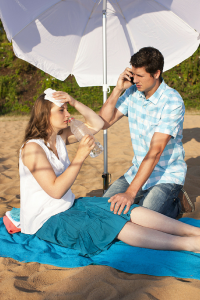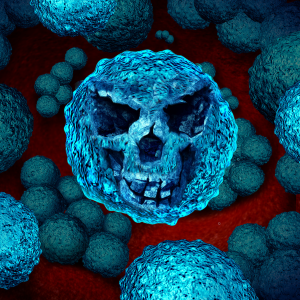You’re with family; enjoying the cloudless skies, warm sand and crystal clear water. Suddenly, your child runs up crying because she’s found a mark on her leg. But not just one mark…ten marks. It’s obvious he or she has been stung by a jellyfish and needs medical attention.
A visit to the beach can unfortunately end with a trip to the emergency room. Beaches have been found to harbor not only hazardous plants, but dangerous animals as well. Between the pollution, wave conditions and other factors, there are several ways to end the trip on a sour note; at the E.R. Let’s discuss four of the dangers at the beach that could have you in the emergency room.
Sharks at the Beach
Shark attacks always make big news splashes, and they can be your biggest threat on the beach. Though rare, shark attacks are most likely to occur near shore, typically inshore of a sandbar or between sandbars, where sharks can become trapped by low tide, and near steep drop offs where shark’s prey gather. The relative risk of a shark attack is very small, but the risks should always be minimized whenever possible. To reduce your risk:
- Don’t swim too far from shore
- Stay in groups – sharks are more likely to attack a solitary individual
- Avoid being in the water during darkness or twilight when sharks are most active
- Don’t go in the water if bleeding from a wound – sharks have a very acute sense of smell
- Leave the shiny jewelry at home – the reflected light resembles fish scales
- Avoid brightly-colored swimwear – sharks see contrast particularly well
Heat Stroke at the Beach
 Another common problem that can end your day at the ER is heat stroke. The Centers for Disease Control and Prevention have notified heat strokes as a serious problem across the beaches in the United States. Heat stroke is brought about by heat exhaustion and dehydration, and will generally occur when the body temperature rises beyond 104 degrees, causing the body to become unstable and unable to cool itself down. Some of the most common symptoms of a heat stroke include fatigue, vomiting, muscle cramps, weakness, incoherence and nausea.
Another common problem that can end your day at the ER is heat stroke. The Centers for Disease Control and Prevention have notified heat strokes as a serious problem across the beaches in the United States. Heat stroke is brought about by heat exhaustion and dehydration, and will generally occur when the body temperature rises beyond 104 degrees, causing the body to become unstable and unable to cool itself down. Some of the most common symptoms of a heat stroke include fatigue, vomiting, muscle cramps, weakness, incoherence and nausea.
To avoid having a heat stroke, please consider the following options:
- Drink more fluids (non-alcoholic) regardless of your activity level. Don’t wait until you’re thirsty to drink.
- Wear light weight, light-colored, loose fit clothing.
- Limit your outdoor activity to morning and evening hours
- Protect yourself by wearing a wide-brimmed hat, sunglasses and at least SPF 15 or higher. The most effective say, “Broad Spectrum” or “UVA/UVB” on the labels.
Following these guidelines laid out by the CDC may help prevent a trip to the emergency room.
Deadly Superbugs at the Beach
Superbugs or bacteria are resistant to antibiotics and can be found lurking on beaches. The superbugs made headlines on the beaches in the United States when beachgoers reported catching bacteria called methicillin-resistant Staphylococcus aureus (MRSA), when they went to take a dip into the ocean. The bacteria can become the cause of skin irritation and can develop into fatal infections for your lungs, bones and other organs in the body. This is why you shouldn’t spend too much time in the water and in order to protect yourself from the bacteria; it is advised that you should take a quick cool shower or bath before you go for a swim.
Jellyfish at the Beach
 Jellyfish may look completely harmless but they are the number one way to ensure that you end up in the ER after a trip to the beach. Some species of jellyfish are lethal and a sting from one of these delightful creatures can be extremely itchy and painful and will cause red rashes that will last for days. Some jellyfish even have deadly poison, which they inject into their victims blood and cause the blood pressure of their victim to raise and stopping the heart in the process.
Jellyfish may look completely harmless but they are the number one way to ensure that you end up in the ER after a trip to the beach. Some species of jellyfish are lethal and a sting from one of these delightful creatures can be extremely itchy and painful and will cause red rashes that will last for days. Some jellyfish even have deadly poison, which they inject into their victims blood and cause the blood pressure of their victim to raise and stopping the heart in the process.
Learning about these threats and signs of danger can potentially save you a trip to the ER and save your life.

